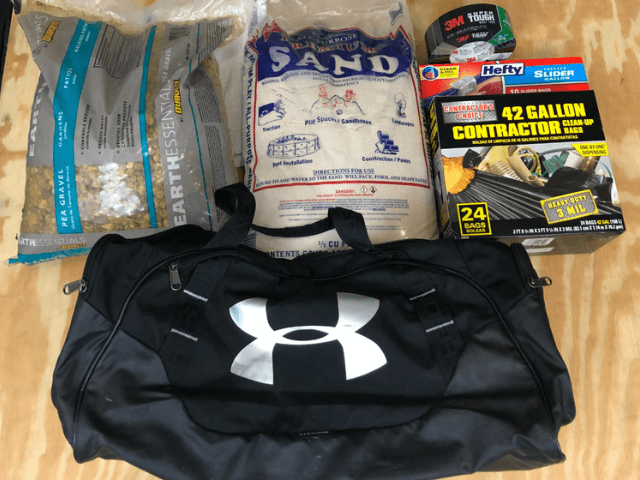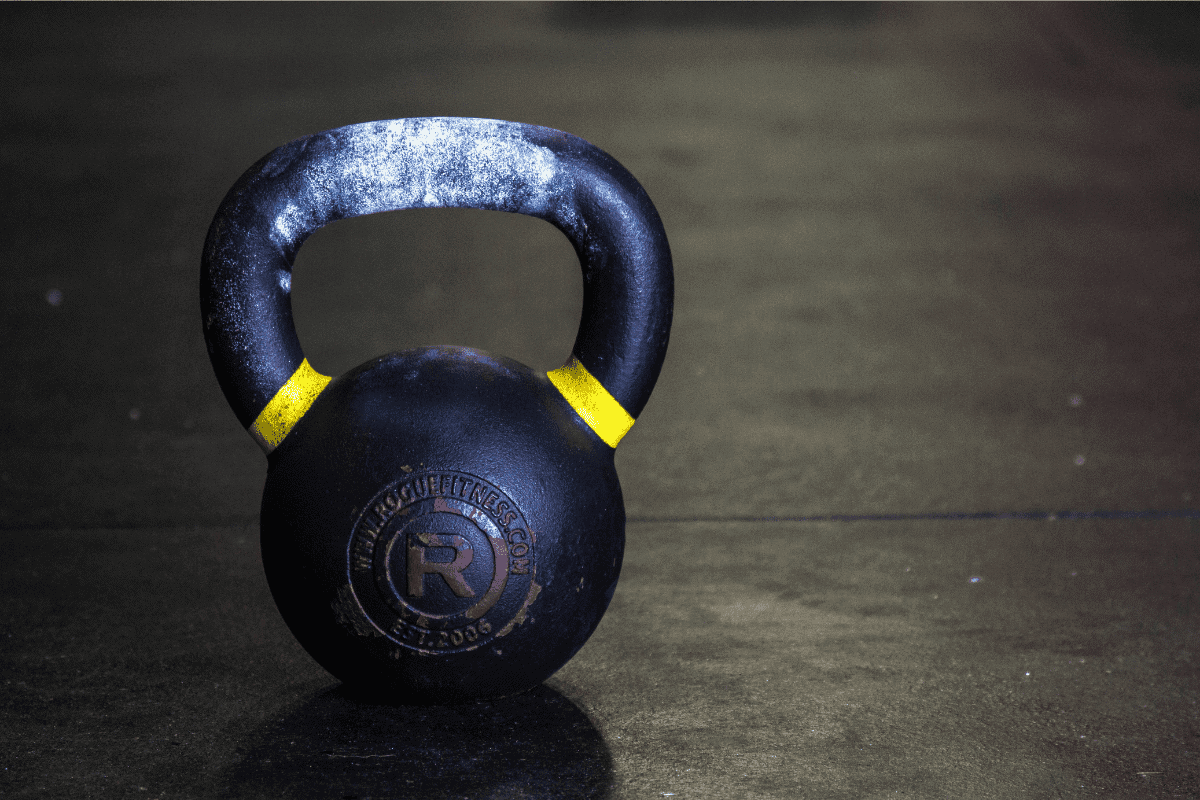How Much Do Kettlebells Weigh? (Kettlebell Weight Chart)
Kettlebells continue to gain popularity within the fitness community – at commercial gyms, Crossfit boxes and home gyms. I believe this partly due to their use in Crossfit workouts, but also their versatility for being able to do a total body workout with just one piece of equipment.
Figuring out how much a kettlebell weighs, at least on the surface, is not that hard. After all, most (but not all to be fair) kettlebells have their weight engraved directly on the kettlebell itself.
Kettlebells can weigh anywhere from 5 pounds all the way up to over 200 pounds. The most popular weights for kettlebells are the 1-pood and 2-pood weights.
Having said that, where it gets a little more complicated is that kettlebells come in both pounds, kilos and another weight that most of us here in the US are much less familiar with – the pood.
What is a Pood?
Pood is a Russian unit of measurement that is used in Russia, Belarus and Ukraine. And because kettlebells originated out of Russia as a means to weigh crops, the term pood has come along for the ride so to speak with this piece of gym equipment.
A pood weighs roughly 16.38 kilos or 36.11 pounds. Now, before you pull out your TI-85 Calculator to figure out how big of a kettlebell to grab for your next workout, I’ve got you covered.
Simply use this chart to quickly convert poods to kilos or pounds to poods or… you get the point.
Kettlebell Weight Chart
(I took the liberty of doing a little bit of rounding to keep it simple)
| Kettlebell Conversion Chart | ||
| Pood | Pounds | Kilos |
| 0.25 | 9 | 4 |
| 0.4 | 13 | 6 |
| 0.7 | 26 | 12 |
| 1 | 35 | 16 |
| 1.2 | 44 | 20 |
| 1.5 | 53 | 24 |
| 1.7 | 62 | 28 |
| 2 | 70 | 32 |
| 2.2 | 80 | 36 |
| 2.4 | 88 | 40 |
| 3 | 106 | 48 |
Standard Kettlebell Weight for Crossfit

I’ve dabbled in Crossfit workouts over the years and from the best I can tell the most popular kettlebell sizes for Crossfit workouts are the 1 pood, 1.5 pood and 2 pood. (Roughly 35, 53 and 70 pounds respectively)
So, if you’re getting serious about your Crossfit training, those are the 3 weights that I would try to add to my home gym repertoire, starting with the lighter 1 pood kettlebell and then working my way up.
What Weight Kettlebell Should You Use
If I had a dollar for every time an athlete has turned to me and asked, “Hey Coach, how much weight should I use for this” – I would be on a beach somewhere sipping Mai Tais. (And, by the way, the answer most of the time is, “It’s written on your sheet.”)
But, I also understand why the question is asked, especially if you’ve not worked much with kettlebells before.
However, it’s an impossible question to answer, because the answer is going to vary widely based on lifting experience, strength and technique.
It also depends on which exercise you’re using the kettlebell for. The weight of the kettlebell you’re going to use for kettlebell swings is going to be vastly different than what you might use for a single-arm kettlebell overhead squat.
My best answer is pretty much the same as it is with almost all exercises when it comes to how much weight one should use. Start light and then work your way up.
If you’re an experienced lifter, you’ll probably quickly blow through the lighter weights until you finally land on a weight that feels challenging but manageable.
What Weight Kettlebell Should a Beginner Start With?
If you’re a beginner, then you should also start light and then work your way up just like I mentioned with an experienced lifter.
The difference is I would recommend staying at those lighter weights a bit longer. Really make sure that you’re comfortable with the technique and how your body is going to respond the next day to whatever it is you’re doing.
Once you’ve checked those two boxes then you can continue to progress up in weight.
How Heavy is Too Heavy For Kettlebell Swings?
If you can no longer maintain proper technique, then the weight is too heavy.
That rule of thumb goes for kettlebell swings, squats, deadlifts, bench press – you name it.
As long as you can maintain sound technique and you have enough strength, your only limitation is in the equipment you can find. Rogue makes a 203-pound kettlebell if you’re the type that likes challenges and setting goals.
Sub For Kettlebell?

Finally, what if you don’t have a kettlebell? Is there something that you can sub in its place for home workouts?
The two best subs I’ve found are to either use dumbbells or, for heavier weights, you can make yourself a sandbag. Here is a DIY Sandbag I made out of a duffel bag, sand and pea gravel.
If you use a dumbbell, grab the head of the dumbbell with both hands and make sure to maintain a good grip so your dumbbell doesn’t go flying through a wall in your garage gym.
If you decide to go down the DIY route, find a sturdy bag with quality stitching that will be able to withstand being swung around with weight inside of it. Both sand and pea gravel make excellent fillers to add weight to your bag.
Neither will feel exactly like a kettlebell, but both are sufficient until you get more money in your home gym budget.

Get Shredded… For Free
Get a free workout Monday through Friday, posted right here on Horton Barbell. These workouts are designed to help you get strong, in shape and look great at the beach!
Final Thoughts
It’s not that hard to figure out how much a kettlebell weighs (even figuring out barbell weights can be harder), but sometimes it’s the converting of that weight that gets tricky.
Bookmark this page and then you can quickly access the conversion chart above to see what weight you need in poods, pounds or kilos.
If you’re a beginner with kettlebells, start light and then slowly progress your weight heavier and heavier – as long you’re able to maintain great technique!
Stay Strong!

